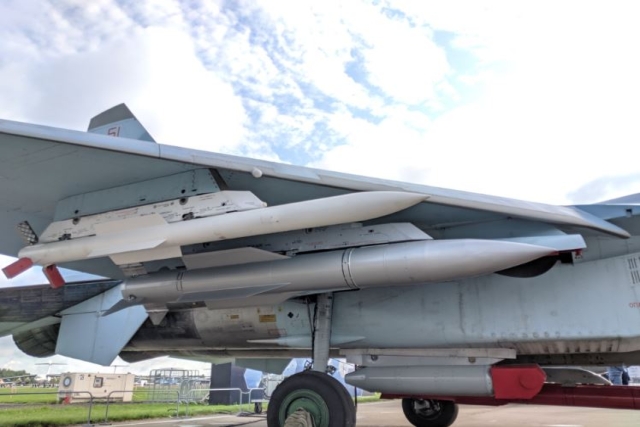Russia’s Su-57 Stealth Fighter Ready for Export
Announcement was made by FSMTC officials at the Dubai Air Show

Russia is ready to receive applications for the export of its Su-57 stealth fighter jet after completing its development program.
Officials from The Federal Service for Military-Technical Cooperation (FSMTC) stated at the ongoing Dubai Air Show that, 'If our foreign partners contact us, we are ready to begin working on this topic.' They noted that several customers are already showing 'increased interest' in the Su-57 aircraft.
Since the close of 2022, the Russian Aerospace Forces have received three batches of the Su-57, the majority of which are actively engaged in the ongoing conflict in Ukraine. Notably, some of these aircraft boast the latest 'Product 30' engine, also recognized as the 'second stage,' enhancing the stealth jet's thrust and supercruise capabilities.

The Su-57 deploys missiles and bombs from its internal bay—an exclusive feature shared by only a select few aircraft worldwide.
In the realm of fifth-generation aircraft available for export, the Russian Su-57 stands alongside the F-35 as a singular contender.
Rostec's recent announcement heralds the commencement of outfitting serial multirole fighters of the 5th generation Su-57 with turbojet afterburning engines of the 2nd stage, labeled 'Product 30.' Boasting an afterburning thrust of 18,000 kgf and a maximum thrust of 11,000 kgf, this advancement amplifies the vehicles' thrust-to-weight ratio by 1.2 times (ascending from 1.13 to 1.36 kgf/kg at normal takeoff weight with 63% fuel).
This enhancement translates to an augmented rate of climb, ranging from 330 to 340-350 m/s, alongside an increased angular speed during steady turns. Moreover, it elevates the service ceiling and supersonic cruising flight speed to 2150-2200 km/h and the maximum speed to an impressive 2600-2700 km/h.
Notably, the engines at the core of this advancement were crafted by the team at JSC Gas Turbine Research and Production Center Salyut.













